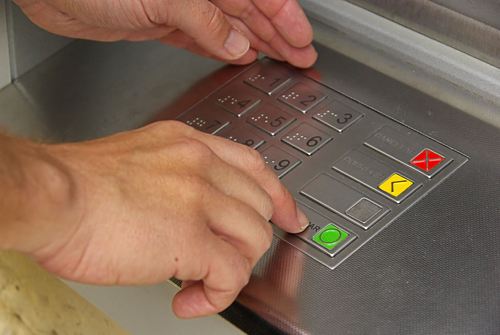Kaspersky Lab experts have investigated how cybercriminals could exploit new ATM authentication technologies planned by banks. While many financial organisations consider biometric-based solutions to be one of the most promising additions to current authentication methods, if not a complete replacement for them, cyber criminals see biometrics as a new opportunity to steal sensitive information.
ATMs have for years been in the sights of fraudsters hunting credit card data. It all started with primitive skimmers – homemade devices attached to an ATM, capable of stealing information from the card’s magnetic strip and pin-code with help of a fake ATM pin pad or a web camera. Over time, the design of such devices was improved to make them less visible. With the implementation of much harder, but not impossible to clone chip-and-pin payment cards the devices evolved into so-called ‘shimmers’: largely the same, but able to gather information from the card’s chip, giving sufficient information to conduct an online relay attack. The banking industry is responding with new authentication solutions, some of which are based on biometrics.
According to a Kaspersky Lab investigation into underground cyber crime, there are already at least twelve sellers offering skimmers capable of stealing victims’ fingerprints. And at least three underground sellers are already researching devices that could illegally obtain data from palm vein and iris recognition systems.
The first wave of biometric skimmers was observed in “presale testing” in September 2015. Evidence collected by Kaspersky Lab researchers reveals that during the initial testing, developers discovered several bugs. However, the main problem was the use of GSM modules for biometric data transfer – they were too slow to transfer the large volume of data obtained. As a result, new versions of skimmers will use other, faster data transfer technologies.
There are also signs of ongoing discussions in underground communities regarding the development of mobile applications based on placing masks over a human face. With such an app, attackers can take a person’s photo posted on social media and use it to fool a facial recognition system.
“The problem with biometrics is that, unlike passwords or pin codes which can be easily modified in the event of compromise, it is impossible to change your fingerprint or iris image. Thus if your data is compromised once, it won’t be safe to use that authentication method again. That is why it is extremely important to keep such data secure and transmit it in a secure way. Biometric data is also recorded in modern passports – called e-passports – and visas. So, if an attacker steals an e-passport, they don’t just possess the document, but also that person’s biometric data. They have stolen a person’s identity”, said Olga Kochetova, security expert at Kaspersky Lab.
The use of tools capable of compromising biometric data is not the only potential cyberthreat facing ATMs, according to the Kaspersky Lab researchers. Hackers will continue to conduct malware-based attacks, blackbox attacks and network attacks to seize data that can later be used to steal money from banks and its customers.
Read the full threat overview report about upcoming cyber threats to cash machines, and measures that can protect banks from these threats on Securelist.com.



